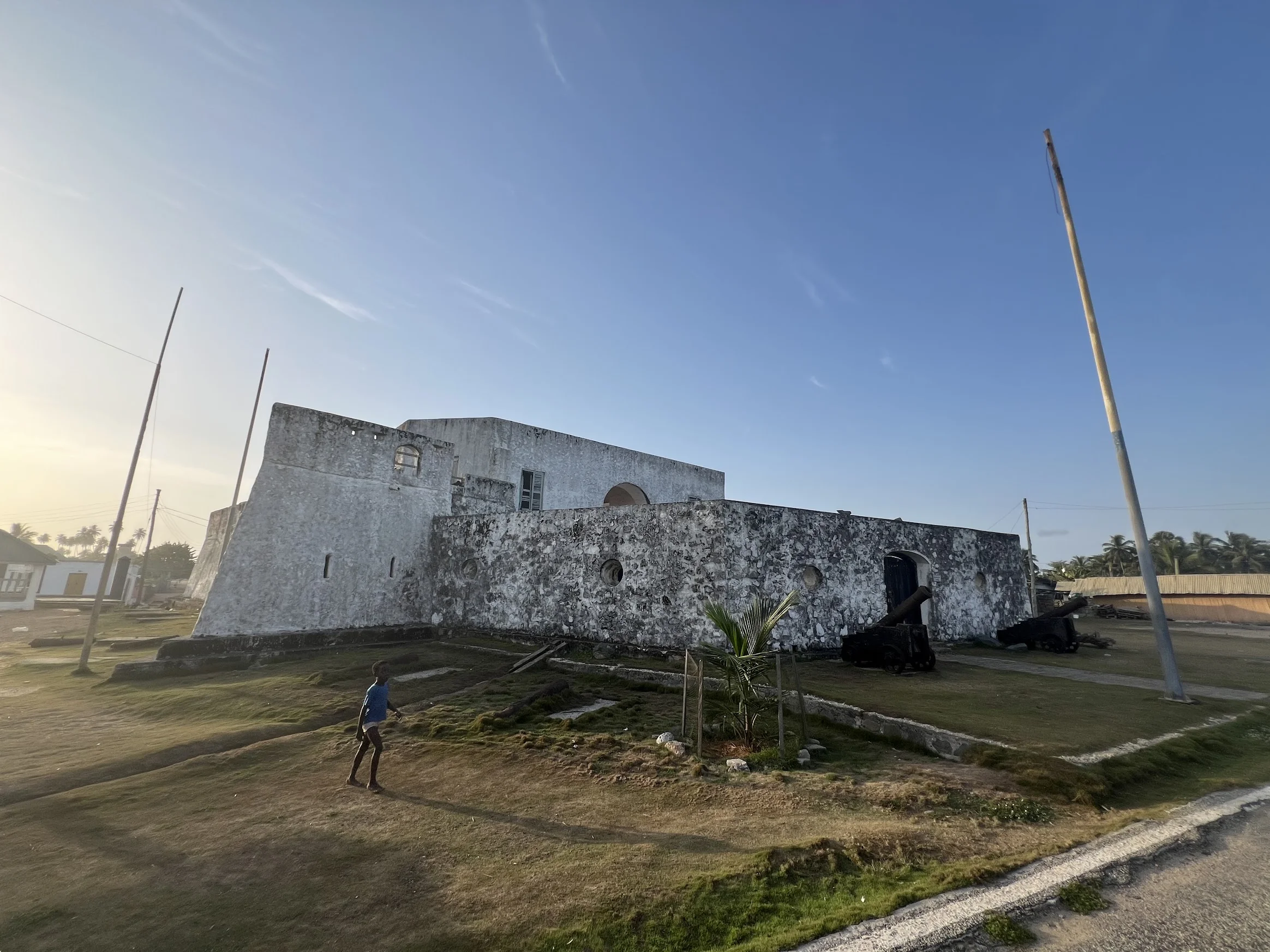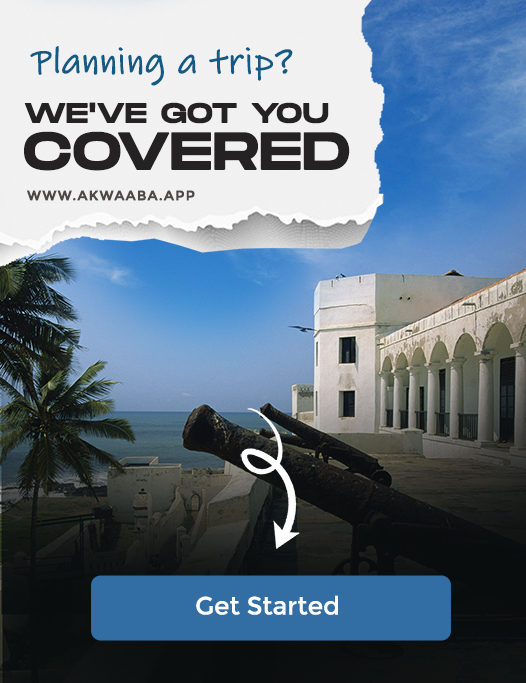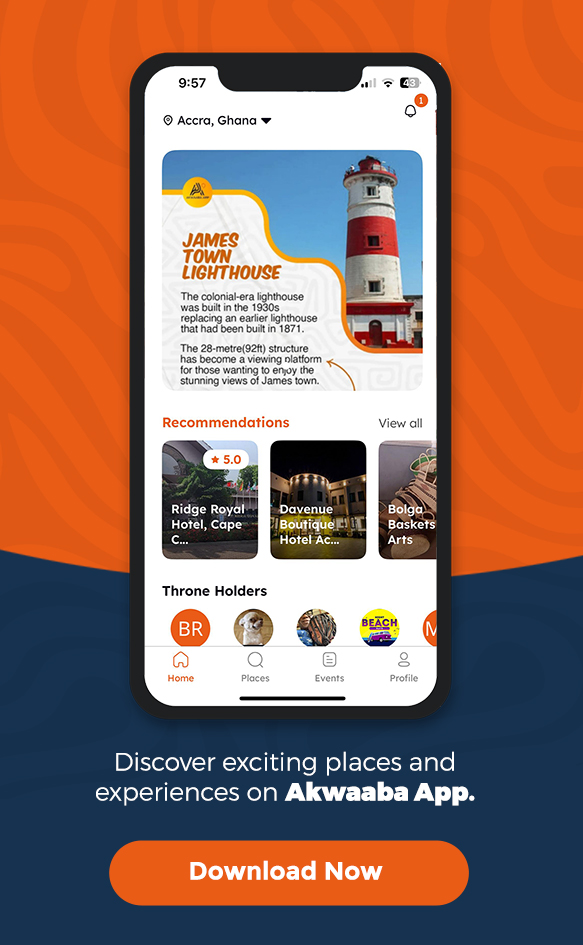Fort Apollonia is a fort in Beyin, Ghana, which is surrounded by the Amansuri wetland. The area was named Apollonia by a Portuguese explorer who sighted it on 9 February, the feast of Saint Apollonia. The Swedish Gold Coast included Apollona in its trading post established by the Swedes between 1655 and 1657. The site was first used as a British trading post in 1691, which was later turned into a fort between 1768 and 1770. From 1836 onwards, the fort was again occupied after the abolition of the slave trade in 1819.
Fort Apollonia offers visitors a unique blend of colonial architecture, stunning ocean views, and rich cultural significance as a silent witness to Ghana’s complex history. This is a must-visit for history enthusiasts, adventure seekers, and those interested in Ghana’s rich past. What makes this fort so significant? Let’s get into the details.
The Rich History of Fort Apollonia
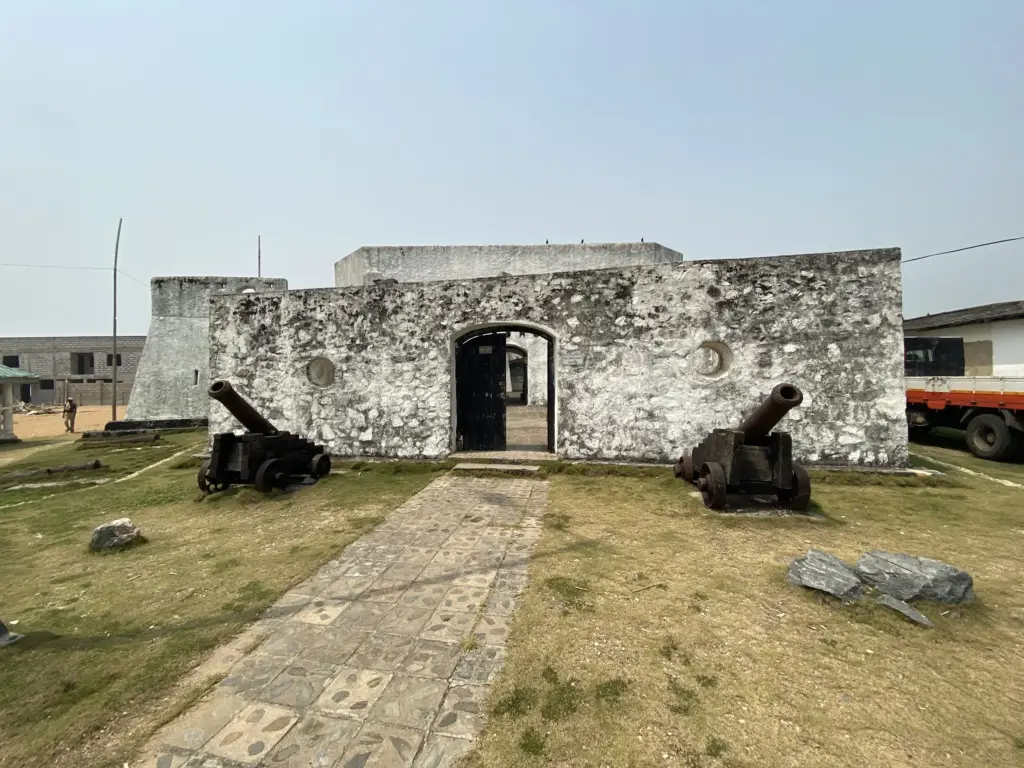
Fort Apollonia was part of the British network of coastal trading posts built in the 18th century. The gold and ivory trade was the main focus of this fort, unlike many others that served as strongholds for the slave trade. Except for the temporary French fort at Assini, there was no fort west of the River Ankobra in Beyin (now in the Western Region of Ghana) until 1670. Several captains of different nationalities haggled fiercely for gold and slaves along the coast.
Nzema Chief Amenihyia granted permission to the English Committee of Merchants to build a fort at Beyin on an elevated platform known as Cape Apollonia to fend off Dutch colonial ambitions, which had led to intermittent warfare in the Nzema country (Apollonia). After two years of searching for building materials, the English began building the last fort on the Gold Coast. First named on St. Apollonia’s Day, the fort is the result of a Portuguese explorer’s sighting of the place.
The abolition of the slave trade diminished the economic importance of the fort, which led to its abandonment in 1819. Dutch forces took over the fort in 1868 after the British and Dutch exchanged forts in 1867. It was renamed after the Dutch monarch Willem III and held by the Dutch until 1872 when the British reclaimed it. Beyin was attacked by a British gunboat during a coalition with the Asante Kingdom in 1873, which led to the bombardment of the fort. As a result, the fort collapsed. During the 1960s, the Ghana Museums and Monuments Board rehabilitated it and used it as a rest house. The Museum of Nzema Culture and History is housed at Fort Apollonia.
Visiting Fort Apollonia Today
After a few years, the Ghanaian government allowed some historical and cultural researchers from Italy to stay in Apollonia’s guest house. Their stay lasted 25 years. Afterwards, the Government of Ghana renovated the museum and renamed it Fort Apollonia Museum of Nzema Culture and History.
There is an extensive collection of memorabilia from times past, as well as cultural and traditional artefacts that tell the story of the Fort and the Nzema people. The fort still stands where it has always stood—in Beyin, a town in Ghana’s Western Region about 90 km west of Takoradi. The building stands tall and strong like a wise old sage, distinguished by its distinct architecture and reminiscent of its bloody, horror-filled past that seems so distant now.
The imposing presence of the fort immediately captures your attention upon arrival. Against the backdrop of the Atlantic Ocean, its weathered stone walls tell stories of centuries past. There is a striking contrast between the European style of the fort and the surrounding African landscape.
What Makes Fort Apollonia Unique?
Fort Apollonia has a different story to tell than many forts in Ghana. The fort primarily thrived as a centre for commercial trade, while slavery left a mark on many coastal strongholds.
The walls of the building still bear witness to European influence and African resistance. The museum’s corridors are lined with artifacts, historical records, and exhibits that tell the story of Ghana’s pre-colonial and colonial periods. Visits can be made more enjoyable with the Akwaaba app. You can explore Fort Apollonia and other attractions in Ghana seamlessly with real-time navigation, historical insights, and travel tips.
Cultural Significance of Fort Apollonia
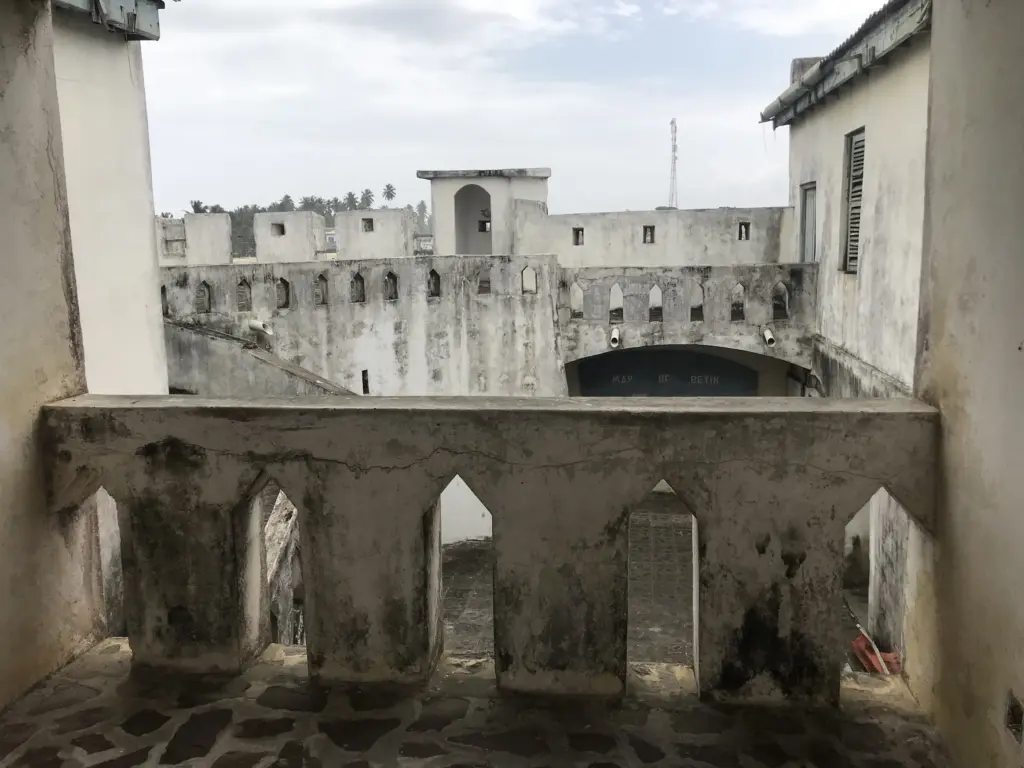
Fort Apollonia holds profound cultural significance for local communities beyond its historical significance. It represents colonial oppression as well as resilience against external forces in Ghana’s past. Fort Nzema represents an important part of the culture of the Nzema people who inhabit this region. Oral histories and local traditions often refer to the fortress and its impact on community development.
The fort has been transformed into a cultural museum to preserve Ghana’s rich heritage. Ghana has opted to recontextualize colonial structures as educational spaces rather than erase their history. In this way, complex historical realities can be examined honestly.
Festivals and cultural events are often held near Fort Apollonia. Ghanaian identity is expressed through a combination of traditional practices and historical commemorations during these celebrations. Akwaaba provides schedules for these events, so visitors can learn about local culture.
Nearby Attractions
The stunning natural environment surrounding Fort Apollonia adds to its appeal beyond its historic walls. Overlooking the Atlantic, the fortress overlooks golden beaches and rolling waves on Ghana’s coastline.
Amansuri Wetland
Amansuri Wetland, Ghana’s largest naturally formed wetland, is just a short distance from the fort. This ecological treasure is home to a diverse range of West African wildlife and plants. Fort Apollonia’s historical exploration can be enhanced with guided tours through this ecosystem.
For centuries, coastal fishing villages have coexisted alongside the fort. On early morning visits, you can see fishing canoes preparing for the day’s catch, an ancient tradition. Experiences like these add depth to your understanding of the region.
Nzulezu Stilt Village
A rare glimpse into Ghana’s indigenous water-based lifestyle is provided by Nzulezu Stilt Village, which stands entirely on stilts above Lake Tadane. The Nzema people have lived here for generations and can be visited by canoe.
Beyin Beach Resort
A serene coastal retreat near Fort Apollonia, Beyin Beach Resort is the perfect place to relax after a day of exploring. Known for its pristine beaches, fresh seafood, and cosy beachfront chalets, it provides travellers with a peaceful getaway. Additionally, the resort offers canoe rides to Nzulezu and guided eco-tours, making it a great place for both relaxation and adventure.
There are many opportunities for adventure in this area, including canoeing, hiking, and birdwatching. With the Akwaaba app, you can connect with knowledgeable local guides. You will benefit both from their expertise and an enriching experience of nature.
Practical Tips for Visiting Fort Apollonia
- Fort Apollonia can be significantly enhanced by timing your visit thoughtfully. A visit to the fortress and its surroundings is typically most comfortable during the dry season (November to March). You’ll find clear skies and better road conditions during these months.
- Walking through the fort’s historic structures requires appropriate footwear. It is recommended to wear comfortable walking shoes with good traction when exploring the uneven surfaces and stone staircases. You should also bring sun protection, since you will likely spend a lot of time outside.
- While the fort can be explored in a few hours, consider allocating a full day to explore both the site and its surrounding attractions. A relaxed pace and the opportunity to engage with community members are provided by this timeframe.
- There are no restrictions on photography in most parts of Fort Apollonia, although some exhibits may have limitations. Always ask permission before photographing locals.
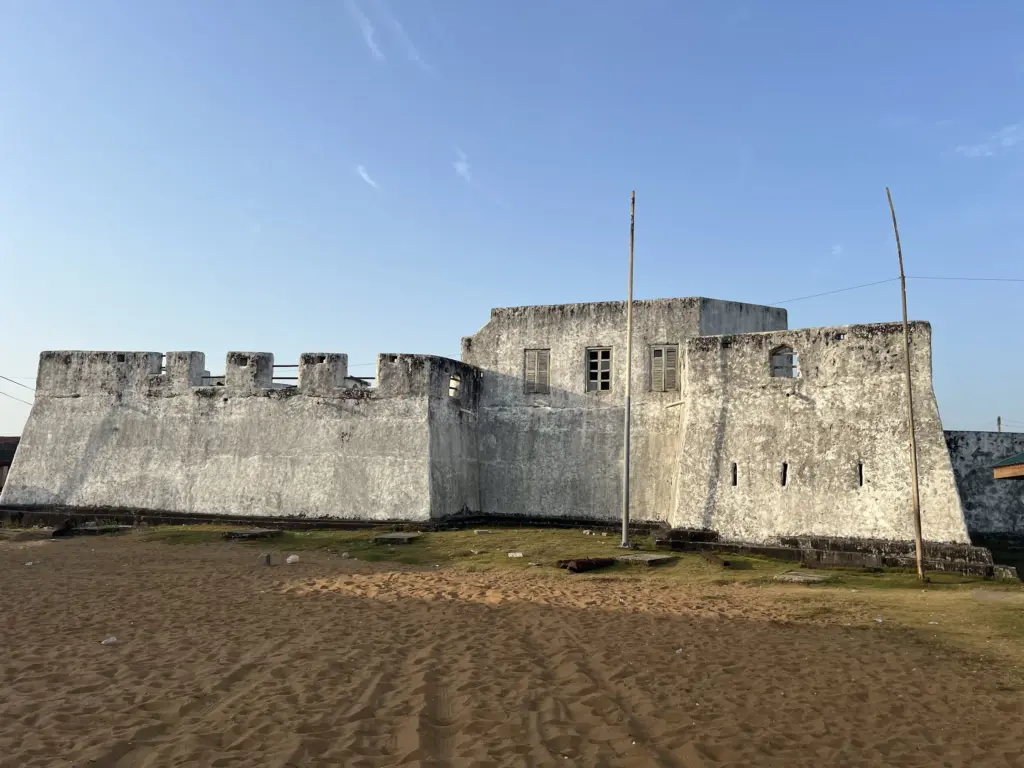
How to Get to Fort Apollonia?
- Car
If you are driving from Sekondi-Takoradi, follow the Takoradi-Elubo Road (N1). You will reach Agona after 45 kilometres. You will follow the road for approximately 12 kilometres before turning left onto Agona – Elubo Rd. You’ll pass Fort Apollonia just before reaching Beyin on your left. As you approach Beyin, look for signs indicating the fort.
- Public Transport
Take a shared taxi or a bus from Sekondi-Takoradi to Beyin to reach Fort Apollonia by public transport. It will take roughly 1.5 to 2 hours to travel. From Beyin, you can hire a taxi to take you directly to Fort Apollonia, which is about 5 minutes away. If you negotiate well, the taxi fare should be around 10-15 GHS.
- Walking
Fort Apollonia can be reached by walking from Beyin. Travel along Agona – Elubo Rd southwest of Beyin town centre. The walk takes about 30 minutes (around 2.5 kilometres). As you approach, you will see Fort Apollonia on your left.
Plan Your Trip with the Akwaaba App
Fort Apollonia becomes even more enriching when you use the right tools. The Akwaaba app can help! You can explore Ghana’s cultural treasures with this innovative mobile application, including Fort Apollonia. It transforms your visit into a deeply immersive experience through interactive maps, historical timelines, and cultural insights. Expert knowledge can still be accessed at your pace while you explore.
Planning your trip requires practical information. Akwaaba provides up-to-date information about opening hours, admission fees, and nearby accommodations. As a result, you can enjoy your experience without having to worry about logistics. When traveling, language barriers can be a challenge. Translation features in the Akwaaba app make it easy to communicate with local guides and community members. As a result, you won’t miss important cultural contexts during your trip.
Final Thoughts
Fort Apollonia represents Ghana’s resilience as more than just a historical monument. The museum tells a compelling story of survival, transformation, and cultural pride from its colonial past to its present-day role as a museum. It’s easier than ever to discover Fort Apollonia and explore Ghana’s heritage with the Akwaaba app. Whether you’re planning a solo trip or a group adventure, this historical fort promises a time travel adventure.
Frequently Asked Questions (FAQs):
Where is Fort Apollonia located?
Fort Apollonia is located in Beyin, a coastal town in Ghana’s Western Region. Takoradi, the regional capital, is about a 3-hour drive away.
What is the historical significance of Fort Apollonia?
Fort Apollonia was built by the British in the 18th century as a trading post for gold and ivory rather than as a slave trade hub. The museum exhibits Ghana’s colonial history and Nzema culture today.
How can I get to Fort Apollonia?
Fort Apollonia can be reached by public transport or a private car from Takoradi. From Accra, you can fly to Takoradi and then continue by road. Travelers can find the best routes and modes of transportation using the Akwaaba app.
What are the opening hours and entry fees?
Fort Apollonia is usually open from morning to late afternoon, with entry fees varying for locals and tourists. You can book guided tours through the Akwaaba app or local tourism offices.
Can I book tours in advance?
Yes! Several travel agencies offer guided tours, and the Akwaaba app offers travel tips and tour schedules for visiting Fort Apollonia and its surroundings.
